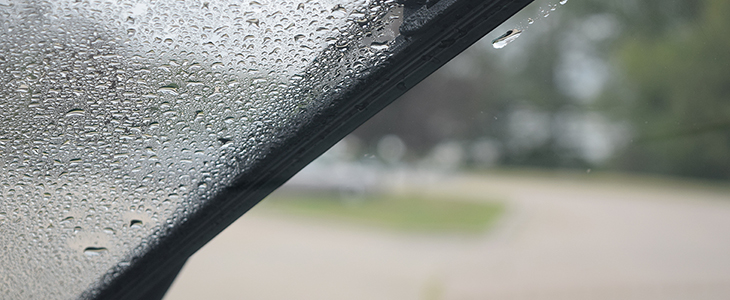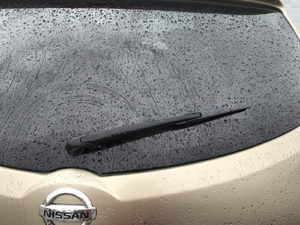
Windshield Wiper Maintenance: It’s a Safety Issue
Windshield wiper blades are important safety devices. If they’re smearing or chattering the driver can’t see properly and may be distracted. Both increase the risk of an accident.
Typically drivers notice their wipers aren’t doing a good job of clearing away rain or spray while on a road trip. They realize the blades need attention, but forget about them when they reach their destination.
Windshield wiper maintenance is a helpful topic to bring up with customers. Consider asking how they are performing or when they were last changed. As a general rule of thumb, wiper blades should be replaced every six to 9 months because the rubber ages and hardens.
Inspect
If the opportunity arises, take a look at both front blades plus, if it’s an SUV, minivan or hatchback, the blade at the rear.
Look for:
Obvious cracks. These run straight up away from the edge and leave the blade looking jagged.
Splits. These occur at the base of the rubber, where the actual blade joins the base. They run in the same direction as the blade and aren’t easily seen.
Uneven wear. Sometimes the edge wears down more in one area than another.
Park set. This is when the rubber loses flexibility and stops flipping over at the end of each stroke. It will feel stiff.
Contamination. Dust, salt and road grime can build up along the blade and put a smear on the windshield. They may wipe clean but it’s likely the chemicals have already attacked the rubber.
Installation faults and arm damage. Sometimes a driver will replace wiper blades themselves, but not get them seated or secured properly. Also, the arms can sometimes be damaged by automated car washes.
If you’re in the vehicle, you should also check how well the wipers perform. Turn on the ignition, actuate the windshield wash and watch how the blade moves. Repeat for the rear, which often gets overlooked.
Chattering over the whole wipe suggests the rubber has taken a set. Localized chatter may indicate dirt on the windshield, abrasive wear of the blade or a split. Leaving one or more curved water lines tells you there’s cracking, while smearing indicates contamination.

Replacement recommended
If any problems are noted let the customer know their wiper blades need replacing. If they ask about windshield wiper maintenance the correct answer is that they are disposable/wear items and replacement is the only form of maintenance. Highlight the safety risks if necessary. Also advise the customer that:
If any problems are noted let the customer know their wiper blades need replacing. If they ask about windshield wiper maintenance the correct answer is that they are disposable/wear items and replacement is the only form of maintenance.
Windshield wiper blades are used as a pair and should always be replaced together. Doing otherwise offers a false sense of economy because if one wiper has worn out, the other is likely on its way out as well.

Highlight the safety risks if necessary. Also advise the customer that:
Windshield wiper blades are used as a pair and should always be replaced together. Doing otherwise offers a false sense of economy because if one wiper has worn out, the other is likely on its way out as well.
The rear wiper blade may not get the use of those on the windshield but leads a harder life because it catches all the road spray. If you’re replacing the front blades, do this one at the same time.
Windshield wiper maintenance is a safety issue. Let your customer know you’re looking out for them.
Share this entry